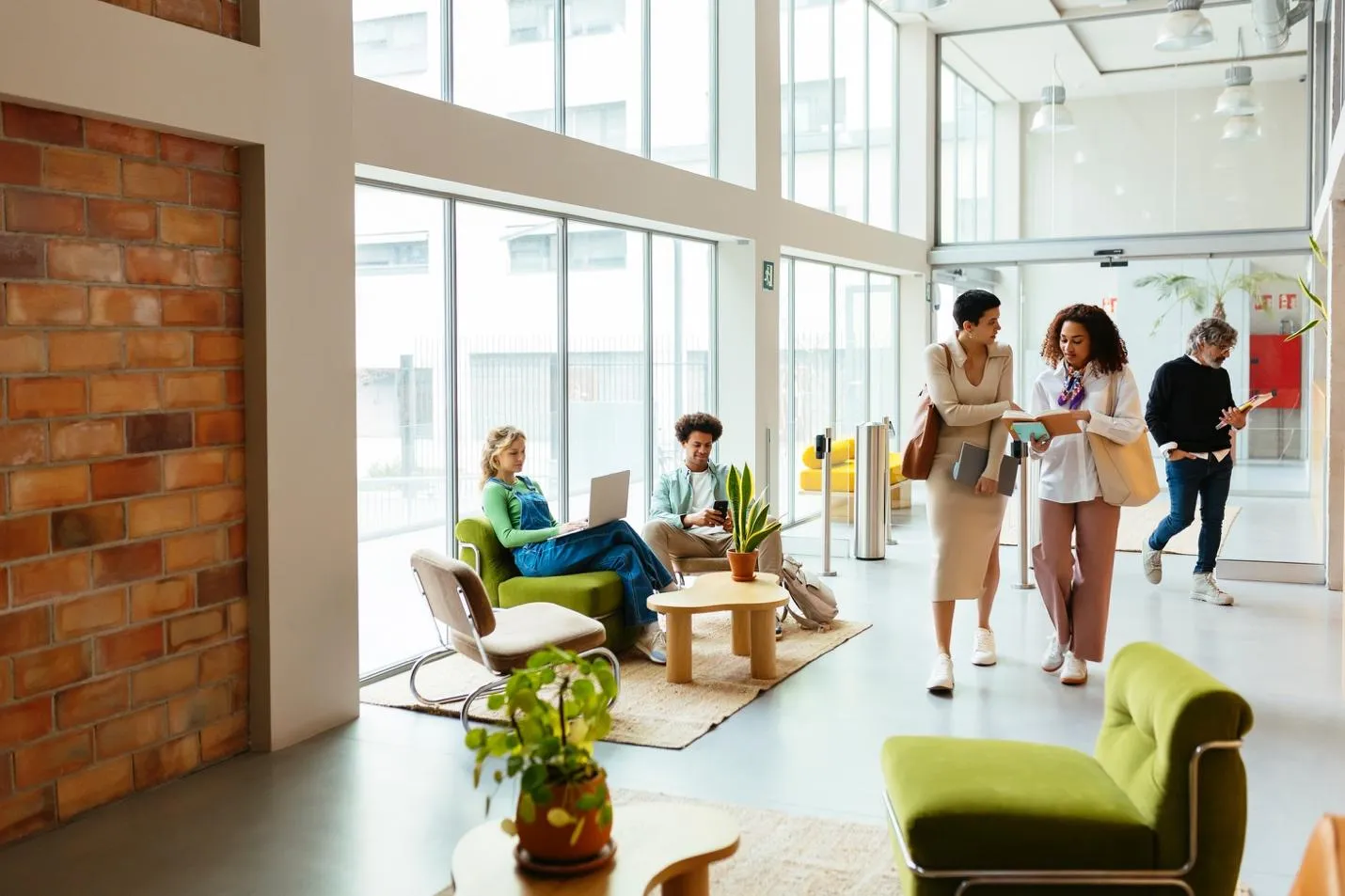Engaging Sight And Sound In The Workplace: Enhancing Focus And Well-Being
July 14, 2025

The physical environment of a workplace directly influences employee performance, satisfaction, and well-being. While factors like lighting and noise control may appear secondary to organizational success, their impact is supported by growing evidence in both psychology and workplace design. Engaging the senses of sight and sound with intention can lead to improved concentration, reduced fatigue, and better overall morale.
Key Takeaways On Engaging Sight and Sound in the Workplace
- The Impact of Visual Elements: Visual elements significantly impact focus and well-being in the workplace.
- The Role of Sound in the Workplace: Sound, both positive and negative, profoundly affects concentration and mood in the workplace.
- Optimizing Visual Engagement: Optimizing visual engagement involves decluttering, incorporating natural elements, and using color psychology to enhance productivity and reduce stress.
- Strategies for Sound Management: Effective sound management includes noise reduction techniques, incorporating natural sounds, and using music to improve focus and create a positive atmosphere.
- Personalization and Employee Input: Personalization and employee input are crucial for creating a sensory environment that meets individual needs and preferences, fostering a sense of control and well-being.
Register Your LLC
Company Registration
START NOW
Visual Environment and Productivity
Lighting quality is one of the most critical visual elements in a workspace. Exposure to natural light improves sleep quality, alertness, and mood. A study from Cornell University found that workers in offices with natural daylight reported an 84 per cent drop in eyestrain and headaches. Where daylight is limited, artificial lighting should replicate natural light conditions as closely as possible. Harsh fluorescent lighting or dim environments can lead to discomfort and reduced output.
Color also plays a subtle but influential role. Cool tones, such as soft blues and greens, can have a calming effect and are often associated with concentration. Warmer tones like muted yellows can stimulate energy and positivity. The use of color should align with the function of the space. For example, creative areas may benefit from more vibrant tones, while focus-driven zones may require more neutral palettes.
Visual clutter, such as crowded bulletin boards or unorganized desks, can also be distracting. Maintaining a clean and organized space helps reduce cognitive overload and supports a sense of mental clarity.
Soundscapes That Support Focus
Noise levels in office environments often rank among the most common complaints. Open-concept offices, while popular, can increase distractions through conversations, ringing phones, or movement. Unwanted background noise has been linked to lower accuracy and slower performance on cognitive tasks.
Sound management begins with layout planning. Designated quiet zones and sound-absorbing materials such as acoustic panels, carpeting, and ceiling tiles can significantly reduce ambient noise. Personal solutions like noise-cancelling headphones may also be helpful in shared spaces.
In contrast, complete silence may not be ideal for every worker. Some individuals concentrate better with low-level background sound. Soft instrumental music or nature sounds can create a soothing environment that helps maintain focus without causing distraction. The key is allowing flexibility, so employees can choose what auditory conditions work best for their tasks.
Integrating Sensory Design Strategically
Companies that engage experiential experts often find more effective ways to balance visual and auditory stimuli. These professionals apply research-backed techniques to create environments that support both comfort and performance. Adjusting light temperature, introducing biophilic elements, managing acoustics, and providing choice in workspaces are all practical strategies rooted in employee needs. These approaches can be particularly beneficial in hybrid or flexible office models. Whether for collaborative meetings or quiet individual work, thoughtful design encourages long-term employee satisfaction.
Sight and sound are more than aesthetic considerations. They influence mental energy, stress levels, and task engagement. Organizations that prioritize sensory well-being can expect improved productivity and employee satisfaction. Whether through thoughtful lighting, organized visuals, or sound design, attention to these sensory inputs supports a healthier, more efficient workplace. For more information, look over the infographic below.
.webp)

